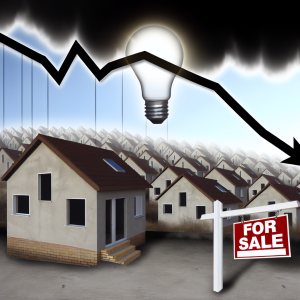New Home Sales Plunge: What This Means for Investors and Advisors in Today’s Housing Market
The latest data on new single-family home sales in the U.S. is sending ripples through the real estate and investment communities. According to the U.S. Census Bureau, new home sales dropped a sharp 13.7% in May 2025 compared to April, settling at an annualized pace of 623,000 units. This figure not only missed Wall Street’s expectations of 695,000 but also marks a 6.3% decline from May 2024. To put it in perspective, this sales pace is well below the recent six-month average of 671,000 and the one-year average of 676,000, lagging even behind the pre-pandemic 2019 average of 685,000 units.
What’s behind this slump? The culprit is clear: mortgage rates. The average rate on a 30-year fixed mortgage hovered near 7% throughout May, starting at 6.83%, peaking just over 7%, and settling at 6.95% by month-end (Mortgage News Daily). This persistent high cost of borrowing is choking buyer activity, as economist Bradley Saunders from Capital Economics aptly notes, "buyer activity can only rise so far with mortgage rates hugging 7%."
But why does this matter beyond the headlines? For investors and advisors, this signals a crucial inflection point. The housing market, traditionally a cornerstone of wealth-building and economic growth, is showing signs of cooling in the face of sustained high financing costs and waning consumer confidence. Stuart Miller, co-CEO of Lennar, one of the nation’s largest homebuilders, highlights that affordability and confidence have both taken a hit, leading to softened demand. Lennar has responded by lowering prices, a move that contrasts with KB Home, which recently raised prices despite the challenging environment.
This divergence in builder strategies underscores a broader uncertainty: Are homebuilders prepared for a prolonged period of subdued demand, or are some banking on a rebound fueled by scarcity and pent-up demand? The median price of a new home still rose 3% year-over-year to $426,600, suggesting builders are trying to maintain margins amid rising costs.
For investors, the growing inventory is a red flag and an opportunity. The supply of new homes for sale jumped to 507,000 units in May, translating to a 9.8-month supply at current sales rates—a 15% increase from a year ago. This is the highest supply level since 2022 and reminiscent of the post-2008 housing crisis era. Elevated supply combined with weak demand typically pressures prices downward, potentially opening buying opportunities for those with capital ready to deploy.
What should investors and advisors do differently now?
-
Reassess Real Estate Exposure: Investors heavily weighted in residential real estate or homebuilder stocks should consider the risk of further price corrections and slower sales. Diversifying into rental housing markets or real estate investment trusts (REITs) focused on commercial or industrial properties might offer more stability.
-
Monitor Mortgage Rate Trends: Mortgage rates remain the key variable. Any sustained drop below 6.5% could reignite buyer demand and stabilize prices. Conversely, rates above 7% could prolong the slowdown.
-
Look for Builders with Pricing Power and Balance Sheets: Companies like KB Home, which can raise prices despite market softness, may be better positioned than those forced to cut prices. Strong balance sheets and disciplined land acquisition will be critical.
-
Consider Regional Variations: Markets like Austin, Texas—where construction is booming—may differ from slower-growing or overbuilt areas. Investors should analyze local supply-demand dynamics rather than rely solely on national trends.
- Prepare for a Potential Shift in Consumer Preferences: With affordability squeezed, demand might shift toward smaller, more affordable homes or alternative living arrangements such as co-living or multi-generational housing.
A unique insight from Extreme Investor Network: We foresee that the next 12-18 months could be a test of resilience for the housing market. If inflation moderates and the Federal Reserve signals a pause or cut in interest rates, a rebound in new home sales could occur, benefiting builders with flexible pricing strategies. Conversely, if economic uncertainties persist, expect a prolonged period of inventory buildup and price adjustments.
In conclusion, the current housing market slowdown is more than a temporary blip—it reflects deeper affordability and confidence challenges that investors must navigate carefully. Staying informed, flexible, and regionally focused will be key to capitalizing on opportunities and mitigating risks in this evolving landscape.
Sources:
- U.S. Census Bureau New Home Sales Data, May 2025
- Mortgage News Daily Mortgage Rate Trends
- Capital Economics Commentary by Bradley Saunders
- Earnings Calls from Lennar and KB Home
Stay tuned to Extreme Investor Network for the latest actionable insights and expert analysis you won’t find anywhere else.
Source: May new home sales tank, pushing supply up to 3-year high

